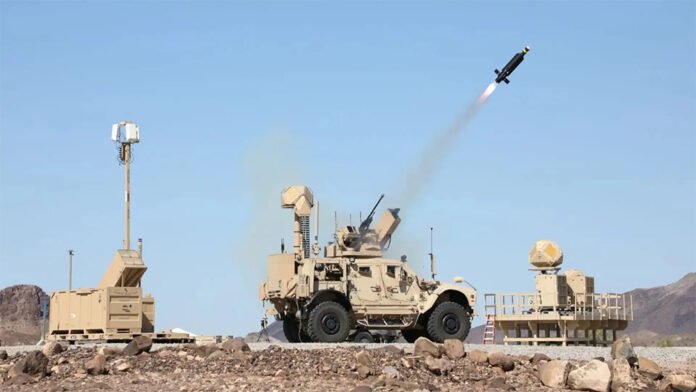Washington: The US Army is finalising the requirements and funding for taking over development of an air defence, hypervelocity cannon, according to a three-star general. And if plans come together, industry could have several opportunities to compete for a piece of the system.
After the US Navy ended work on BAE Systems’s Hypervelocity Projectile in 2021, the Pentagon’s Strategic Capabilities Office (SCO) picked it up under the Multi-Domain Artillery Cannon System program — a 155mm self-propelled artillery system with the Hypervelocity Projectiles. The effort is in the process of being handed over to the Army where service officials are finalising requirements and calling the weapon the Cannon-Based Air Defence initiative, according to Lt Gen Robert Rasch, who heads up the service’s Rapid Capabilities and Critical Technologies Office (RCCTO).
“It’s been an evolution,” Rasch said in Huntsville, Alabama. Part of the process right now, he explained, is deciding just what to keep, what to sole source to companies and what parts to compete out.
“Some of it will absolutely be competed,” Rasch added. “We’re looking at each of the components that SCO has done. There’s a [155mm] cannon, there’s a radar, there’s a battle manager, there’s the resupply aspects … and [there’s] the projectile itself. Some of those technologies are more mature than others.”
While Rasch didn’t disclose just what components might be ripe for competition, he noted that in some cases, there may be sole source deals because that would “probably make sense,” but if there are multiple viable vendors it might make sense to “open it up to competition.”
What isn’t clear is if Rasch’s team plans to follow through with the late-2024 announcement of its intent to sole-source cannon and projectile work to BAE, or if that decision is now up in the air too as part of the ongoing requirements relook. However, he asserted that no contracts for the revamped effort have been awarded. Several other aspects are under consideration too.
For example, Rasch said it isn’t yet clear if the Army will move to make this an offensive weapon too at some point in the future so that it can fire both hypervelocity rounds and traditional 155mm ones. If that decision is made it could reshape the Army’s long-awaited tactical fires study.
Another question up for debate is whether to use a platform with some level of autonomy. While early autonomy work had been done inside the initiative, Rasch said service officials have not yet decided if they will “port over” a type of leader-follower capability into the revamped weapon.
“That’s all part of the acquisition strategy,” he said. “We have multiple ways to get after this, and we’ve got plans, and we’ve apprised leaders of our plans, but we really need to wait until we get appropriated funds to go execute.”






